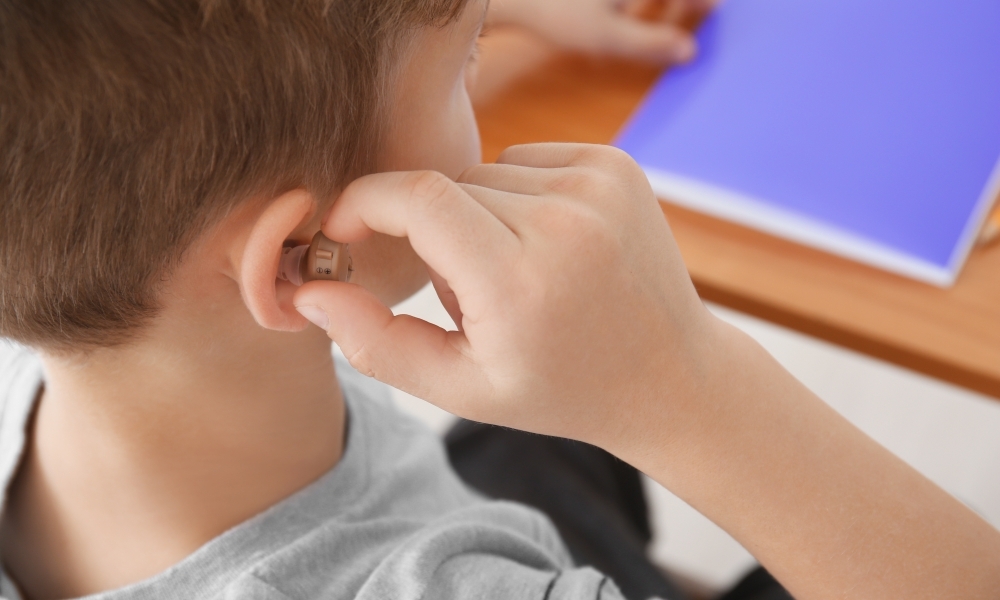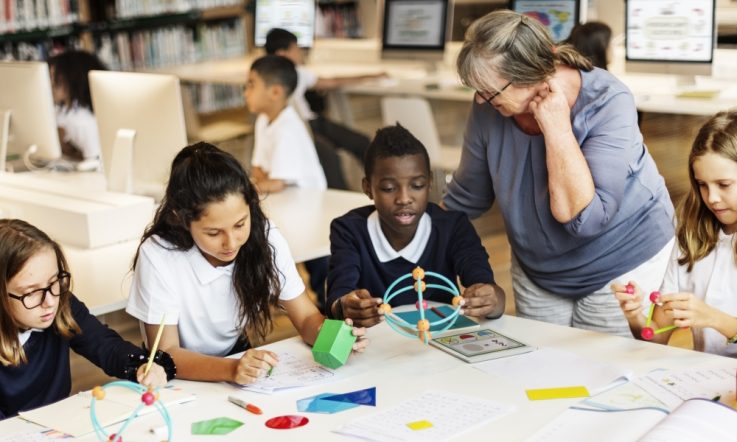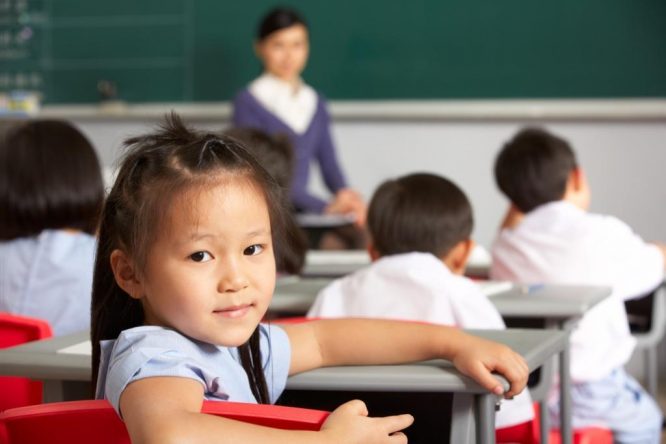The underachievement of gifted and high-achieving students is, in part, propagated by the dangerous myth that they will succeed regardless.
There is a five to six year grade level discrepancy in mixed ability classrooms (Masters, 2020) and if we continue to believe our high achievers will succeed regardless, they are likely to continue to be stifled by simple content and an inappropriate curriculum.
The need to develop each student to their potential is clear. Here in New South Wales, a refreshed gifted education policy was released by the state Department of Education, to be implemented from the start of 2021 in all government schools. It brings a renewed focus on the needs of gifted students and, specifically, the need for additional support and differentiated learning experiences.
From misconception to alarm
When I began as Gifted and Talented Coordinator, my first task was to pore through the profiles of identified gifted students. I had taught many of them in Mathematics or Science and my first impression of most was that they were successful learners – after all, they were almost all ‘A grade’ students. Equating this with successful learning is a common misconception among teachers (Heyder et al., 2018). A closer look at the profiles raised my alarm.
- There were many gifted students who were maintaining an A grade but achieving far below their potential – the gap between their achievement and others in their grade was closing as they progressed through senior school.
- There was less diversity among the population of gifted students than expected from the school context and general population.
- There were many gifted students whose grades had declined over the last one to two years.
All of these groups were evidence of underachievement. Underachievement is the delta between expected achievement and actual achievement. The expected achievement may be based on individual IQ test scores, past achievement scores, creativity scores, teacher observations, or a combination of these (Rimm et al., 2018). In my case, I was using past achievement scores and teacher observations, as well as IQ scores where they were available.
The below discusses why each of these groups of students represent underachievement and why we should be alarmed.
Group 1: The high-achieving underachievers
After meeting with gifted students who were maintaining an A grade and viewing work samples from English and Science, it was clear that they were hitting the ceiling on these grade level assessments. There was no differentiation of assessment and at least half of what was assessed had been mastered by these students the year before.
These findings are similar to what has been documented in research literature (Burrell et al., 2017; Callahan & Hertberg-Davis, 2018; Reis & Renzulli, 2012). The lack of growth among high achievers has substantive evidence. A US study found that 30-50 per cent of initially high-achieving students declined in their performance over time (Xiang et al., 2011).
In Australia, PISA data shows the proportion of high performing students decreased in each of the three assessment domains between 2000 and 2018 (Thomson et al., 2019).
Group 2: The invisible underachievers
The lower diversity I found among the profiles of gifted students is evidence of the existence of ‘invisible underachievers’, whose ability is underestimated (Chaffey et al., 2015). In the course of my first year in the role, I received psychometric testing for a student who was achieving below grade level that indicated he was a gifted child. After speaking to some of his class teachers, they dismissed the suggestion, commenting that he 'couldn’t possibly be gifted’.
Teachers frequently expect to find gifted students among high achievers, and often refuse to entertain the idea that a low-achieving student could be gifted (Campbell & Smith, 2013; Russell, 2018). This is to the detriment of students as it results in the under-representation of minority groups in gifted programs (Ford, 2010; Worrell et al., 2019) and the lack of appropriately differentiated instruction in regular classrooms (Imbeau, 2018).
Research tells us that gifted students are a non-homogenous group (Reis & Renzulli, 2010). The gifted students at my school have different backgrounds, talents and traits. There is, however, a lower portion of gifted students from disadvantaged groups than represented in the wider school population. In our context, this lack of identification of students from certain sub-groups is tied to underachievement, since the inference is that students with high potential are not achieving and not being included in programs and services provided and therefore don’t have the same opportunities to develop their talent.
To better understand this group, I considered three sub-groups frequently underrepresented in gifted programs.
Twice exceptional (2e)
These are high-potential students with a diagnosed disability or disorder. An estimated 20 per cent of gifted students are twice exceptional (De Bonte, 2019), however, these students are often overlooked (Harwin, 2019) and under-represented in both gifted and support programs (Reis & Renzulli, 2012). Many 2e students are unidentified because of the masking effect, where their disability masks their talent and vice-versa (Maddocks, 2018). I realised that with only 9 per cent of the gifted students at our school having a diagnosed disability, it is likely we have not identified all the 2e students, since we should expect to find closer to 20 per cent of the gifted population with a disability.
Low socioeconomic status
Students from lower income families have been shown to be as much as four times less likely to be selected for gifted programs (Grissom et al.,2019). Compounding this, low SES students lack the opportunities to learn and develop their talent due to poverty. Underachievement is more significant in this sub-group, with a school drop-out rate twice that of their peers (Wyner et al., 2007). I found that not one of the identified students at my school was from a low SES family.
Culturally or linguistically diverse
Research is clear that students outside the main cultural group are frequently under-represented in gifted programs (Ford et al., 2014). Part of the problem is that students from culturally diverse backgrounds commonly score lower on IQ tests (Ford, 2004) and may also be held to lower teacher expectations (Plunkett & Kronborg, 2011). Without multiple methods of identification that include non-verbal and culturally sensitive tests we will continue to exclude some high potential students. Returning to our own context, a particular ESL (English as a Second Language) student came to mind. I began to interview her teachers and parents and, after collecting information, included her as a gifted student and invited her to join the school’s gifted program.
Group 3: The low-achieving gifted students
This group of students seem to be the target of many research-based interventions to arrest underachievement. This lack of achievement may be driven by affective issues, such as a lack of motivation, or environmental factors, including family and teacher effects. It should not be surprising that gifted students do not necessarily succeed as the definition of gifted and talented described by Gagné’s (2004) differentiated model, makes distinction between inherited gifts and demonstrated talents. It describes a talent development process which is not achieved without the necessary catalysts for success, including a supportive environment, goal-management, and favourable physical and mental traits. These areas, along with chance elements, may become inhibitors rather than catalysts impeding talent development.
Despite the dedication of teachers, catering for diverse student needs is a challenge. In interviews with gifted students at my school, students have indicated they feel they have little in common with their peers. Other impeding factors can include a lack of challenge and belonging, family environment, and self-effects such as self-esteem, self-efficacy, or negative emotions attached to the context or task.
The impact of these factors on underachievement is severe. If interventions are not made for these students, underachievement not only continues but they may even drop out of school. Renzulli and Park (2000) found approximately five per cent of gifted students drop out of school, but up to 25 per cent has been reported (Robertson, 1991).
Considering all three groups discussed above, the underachievement among gifted students is extremely high – up to 57 per cent (Peterson & Colangelo, 1996). There is no doubt of the detrimental effects of teacher misconceptions about gifted students, and the myth that they will succeed regardless.
Stay tuned: In a follow-up article, Michelle Lucas will look at four interventions shown to be highly effective in addressing underachievement and meeting the needs of gifted students.
References
Burrell, M., Horsley, J., & Moeed, A. (2017). Identification of, and Academic Provision for High-Ability Science Students: What Does the Literature Say? European Journal of Science and Mathematics Education, 5(2), 110-118.
Callahan, C. M., & Hertberg-Davis, H. L. (2018). Fundamentals of gifted education : Considering multiple perspective. Routledge.
Campbell, J., & Smith, L. M. (2013). Families, education and giftedness: Case studies in the construction of high achievement (Vol. 3): Springer Science & Business Media.
Chaffey, G. W., Bailey, S. B., & Vine, K. W. (2015). Identifying high academic potential in Australian Aboriginal children using dynamic testing. Australasian Journal of Gifted Education, 24(2), 24-37.
Rimm, S. B., Siegle, D., & Davis, G. A. (2018). Education of the gifted and talented (7th ed.). pp 233-236. Pearson.
De Bonte, A. (2019). Beyond the neuropsychological evaluation: Finding the right professionals to support your 2e child's needs. Parenting for High Potential, 8(4), 15-18.
Ford, D. Y. (2004). Intelligence testing and cultural diversity: Concerns, cautions, and considerations. National Research Center on the Gifted and Talented.
Ford, D. Y., Coleman, M. R., & Davis, J. L. (2014). Racially, ethnically, and linguistically different gifted and talented students. Gifted Child Today, 37(3), 133-134. doi:10.1177/1076217514533277
Gagne, F. (2004). Transforming gifts into talents: The DMGT as a developmental theory. High Ability Studies, 15(2), 119-147. https://doi.org/10.1080/1359813042000314682
Grissom, J. A., Redding, C., & Bleiberg, J. F. (2019). Money over merit? Socioeconomic gaps in receipt of gifted services. Harvard Educational Review, 89(3), 337-369. https://doi.org/10.17763/1943-5045-89.3.337
Harwin, A. (2019, November 25). Schools struggle to widen access to gifted classes: 'Twice exceptional' students often get overlooked. Education Week. https://www.edweek.org/teaching-learning/twice-exceptional-students-miss-out-on-gifted-classes/2019/11
Heyder, A., Bergold, S., & Steinmayr, R. (2018). Teachers' knowledge about intellectual giftedness: A first look at levels and correlates. Psychology Learning and Teaching, 17(1), 27-44.
Imbeau, M. B. (2018). Evidence-based curricular/instructional suggestions for meeting the needs of all learners including those who are advanced. Gifted Child Today, 41(1), 5-6. http://dx.doi.org/10.1177/1076217517735904
Masters, G. (2020). Nurturing Wonder and Igniting Passion, designs for a new school curriculum: NSW Curriculum Review. NSW Education Standards Authority. https://www.nswcurriculumreview.nesa.nsw.edu.au
Maddocks, D. L. S. (2018). The identification of students who are gifted and have a learning disability: A comparison of different diagnostic criteria. The Gifted Child Quarterly, 62(2), 175-192. https://dx.doi.org/10.1177/0016986217752096
Peterson, J. S., & Colangelo, N. (1996). Gifted achievers and underachievers: A comparison of patterns found in school files. Journal of Counseling & Development, 74(4), 399-407.
Plunkett, M., & Kronborg, L. (2011). Learning to be a teacher of the gifted: The importance of examining opinions and challenging misconceptions. Gifted and Talented International, 26(1-2), 31-46.
Reis, S. M., & Renzulli, J. S. (2010). Is there still a need for gifted education? An examination of current research. Learning and individual differences, 20(4), 308-317. https://dx.doi.org/10.1016/j.lindif.2009.10.012
Reis, S. M., & Renzulli, J. (2012). Challenging gifted and talented learners with a continuum of research- based interventions strategies. In M. A. Bray & T. J. Kehle (Eds.), The Oxford Handbook of School Psychology (pp.456-482). Oxford University Press.
Renzulli, J. S., & Park, S. (2000). Gifted dropouts: The who and the why. Gifted Child Quarterly, 44(4), 261-271. doi:10.1177/001698620004400407
Robertson, E. (1991). Neglected Dropouts The Gifted and Talented. Equity & Excellence in Education, 25(1), 62-73.
Russell, J. L. (2018). High school teachers' perceptions of giftedness, gifted education, and talent development. Journal of Advanced Academics, 29(4), 275-303. http://dx.doi.org/10.1177/1932202X18775658
Thomson, S., De Bortoli, L., Underwood, C., & Schmid, M. (2019). PISA 2018 in Brief I. Student performance. Australian Council for Educational Research (ACER). https://research.acer.edu.au/ozpisa/34
Wyner, J. S., Bridgeland, J.M., & Dilulio, J.J. (2007). Achievement trap: How america is failing millions of high-achieving students from lower-income families. Gifted Child Today, 13.
Look at the three groups discussed by Michelle Lucas in this article. Thinking about the high-achieving students at your school – are they underachieving on their potential? Why might this be? Is there diversity in the group of students identified as gifted? What about low-achieving gifted students – does anyone come to mind?



